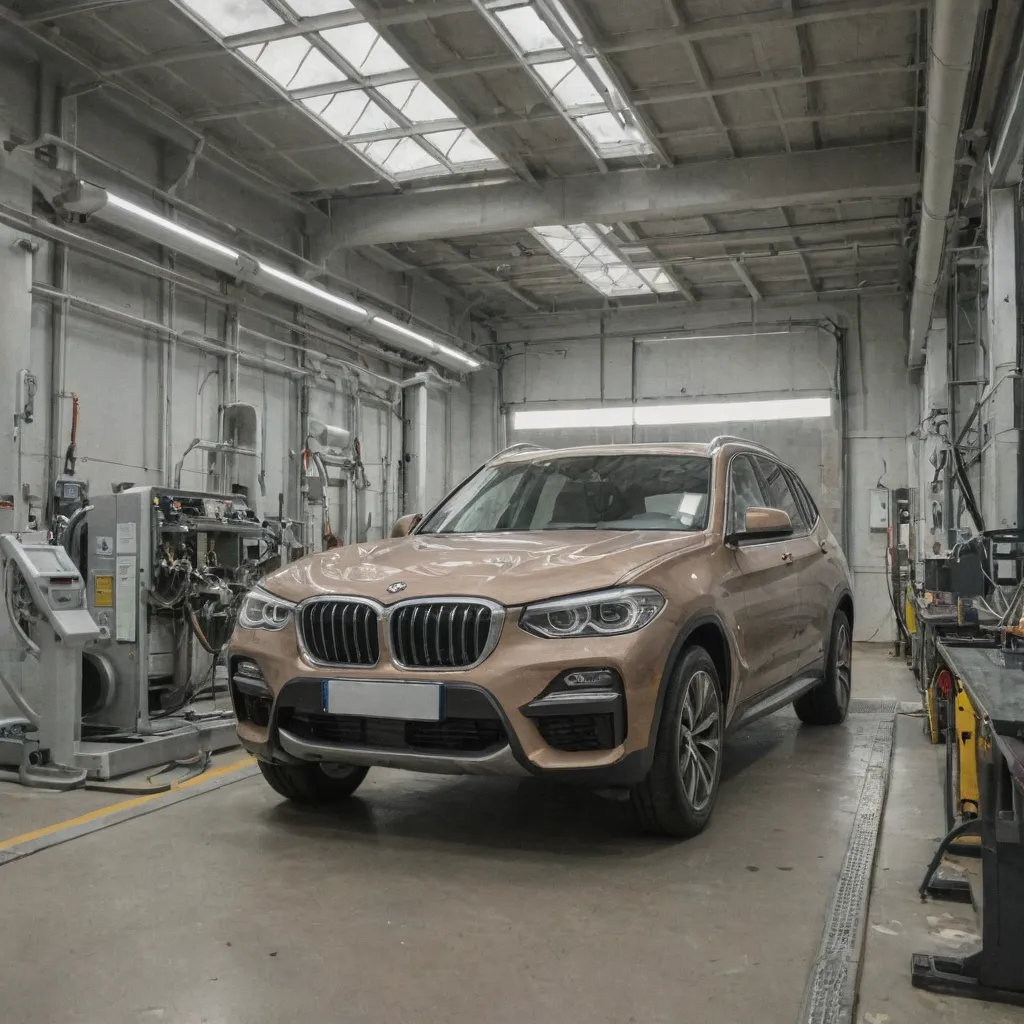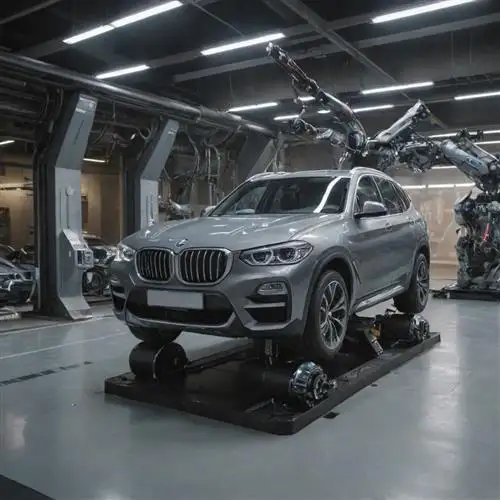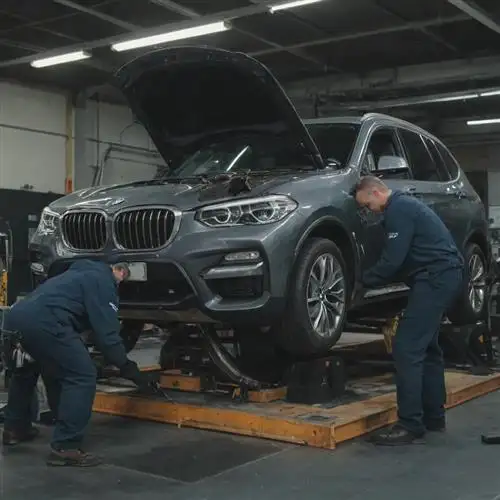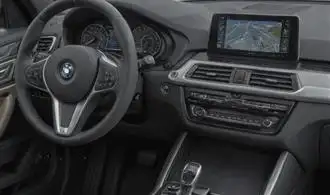
The Evolving Maintenance Landscape of the BMW X3
As the BMW X3 cements its position as a beloved luxury SUV, the maintenance landscape around this vehicle is evolving rapidly. The days of traditional maintenance routines are giving way to more advanced, data-driven approaches that optimize performance, efficiency, and longevity. At the heart of this transformation is the recognition that the BMW X3 is no longer just a transportation tool, but a sophisticated piece of engineering that requires a more nuanced approach to maintenance.
One of the most significant shifts in the maintenance landscape is the increasing reliance on telematics and connected car technologies. BMW's advanced diagnostic systems now provide a wealth of real-time data, allowing owners and mechanics to identify potential issues before they become major problems. By monitoring parameters such as engine performance, battery health, and brake wear, these systems can proactively schedule maintenance intervals, ensuring that the BMW X3 is always operating at its peak. This not only enhances the driving experience but also helps to extend the lifespan of the vehicle, ultimately saving owners money in the long run.
Another key aspect of the evolving maintenance landscape is the growing emphasis on preventive maintenance. Rather than waiting for problems to arise, BMW X3 owners are increasingly taking a proactive approach, scheduling regular check-ups and addressing minor issues before they escalate. This includes everything from routine oil changes and tire rotations to more comprehensive inspections of the suspension, brakes, and electrical systems. By addressing these concerns early on, owners can avoid costly repairs and keep their BMW X3 running smoothly for years to come.
Interestingly, the future of BMW X3 maintenance also involves a greater focus on personalization and customization. As owners become more engaged with the maintenance process, they are demanding more tailored solutions to fit their individual driving styles and needs. This could involve the use of specialized lubricants, customized performance upgrades, or even predictive maintenance algorithms that adapt to the unique characteristics of each vehicle. The Why Your BMW X3's Performance Is Holding You Back article delves deeper into this topic, exploring how owners can optimize the performance of their BMW X3 through strategic maintenance and upgrades.
Predictive Diagnostics for the BMW X3
As the BMW X3 continues to evolve, the future of its maintenance is poised to take a significant leap forward with the integration of predictive diagnostics. This cutting-edge technology is set to revolutionize the way owners and service providers approach the upkeep of this popular luxury SUV.
At the heart of predictive diagnostics lies the ability to anticipate potential issues before they manifest. By continuously monitoring the X3's various systems and components, this advanced system can detect subtle changes or patterns that may indicate an impending problem. This proactive approach allows for timely intervention, preventing minor issues from escalating into more serious and costly repairs.
One of the key aspects of predictive diagnostics for the BMW X3 is its reliance on sensor data. The vehicle is equipped with a network of sensors that constantly gather information about its performance, from engine vitals to suspension behavior. This data is then analyzed by sophisticated algorithms, which can identify anomalies and predict the likelihood of future malfunctions.
For example, the predictive diagnostics system may detect a slight variation in the engine's performance or a gradual decline in brake pad thickness. By flagging these subtle changes, the system can alert the owner or the service provider, allowing them to schedule preemptive maintenance before the problem becomes more severe. This not only saves time and money but also enhances the overall reliability and longevity of the BMW X3.
Another key aspect of predictive diagnostics is its integration with advanced telematics and connected car technologies. By leveraging the BMW X3's connectivity, the system can communicate with the manufacturer's service centers, providing real-time updates on the vehicle's health and any potential issues that may require attention. This streamlined communication can facilitate proactive scheduling of service appointments, ensuring that the X3 receives the necessary care with minimal disruption to the owner's daily routine.
As predictive diagnostics continue to evolve, we can expect to see even more sophisticated capabilities emerge. Advancements in machine learning and artificial intelligence may enable the system to not only detect problems but also provide personalized maintenance recommendations based on the X3's unique driving patterns and usage history. This level of customization can further enhance the owner's experience, ensuring that the BMW X3 remains in peak condition throughout its lifetime.
Advancements in BMW X3 Repair and Servicing
The BMW X3 has established itself as a premium mid-size SUV, known for its dynamic performance, luxurious interior, and advanced safety features. As technology continues to evolve, the maintenance and repair of the BMW X3 are also undergoing significant advancements. These advancements aim to provide BMW owners with a more seamless, efficient, and cost-effective ownership experience.
One of the key advancements in BMW X3 repair and servicing is the increased use of diagnostic technology. Modern BMW vehicles, including the X3, are equipped with a sophisticated array of sensors and computer systems that monitor the vehicle's performance and health. By leveraging advanced diagnostic tools, BMW technicians can quickly identify and address any issues, often before they become more serious and costly. This allows for more proactive maintenance, reducing the likelihood of unexpected breakdowns and maximizing the vehicle's longevity.
Another notable advancement is the integration of telematics and connected services. BMW's ConnectedDrive technology allows the X3 to communicate with the manufacturer's service centers, providing real-time data on the vehicle's condition. This data can be used to schedule maintenance appointments, order necessary parts, and even provide personalized service recommendations based on the vehicle's usage and driving patterns. By anticipating service needs, BMW owners can enjoy a more convenient and efficient ownership experience.
The increasing use of predictive maintenance is another trend shaping the future of BMW X3 repair and servicing. By analyzing data from sensors and historical service records, BMW can forecast when certain components are likely to require replacement or maintenance. This allows for more proactive planning and minimizes the risk of unexpected breakdowns, leading to a more reliable and cost-effective ownership experience.
Additionally, the advancements in BMW's service network and technician training are contributing to the enhanced repair and servicing of the X3. BMW's authorized service centers are equipped with the latest tools, equipment, and specialized training to ensure that every repair and maintenance task is performed to the highest standards. This commitment to excellence helps to preserve the BMW X3's performance, reliability, and resale value over the long term.
Furthermore, the integration of mobile and digital technologies is transforming the BMW X3 repair and servicing experience. Owners can now schedule service appointments, track the progress of their vehicle's repair, and even access digital service records through their smartphones or other connected devices. This level of transparency and convenience empowers BMW owners to better manage their vehicle's maintenance and stay informed about the health of their X3.
The Role of Connectivity in BMW X3 Maintenance
As the automotive industry continues to evolve, the role of connectivity in vehicle maintenance has become increasingly significant. The BMW X3, a popular mid-sized luxury SUV, is no exception to this trend. With the integration of advanced technology and the growing emphasis on digital solutions, the maintenance of the BMW X3 has been transformed, offering owners a more seamless and efficient experience.
One of the key ways connectivity has impacted BMW X3 maintenance is through the integration of remote diagnostics. Through a suite of sensors and onboard computers, the vehicle can continuously monitor its own health and performance, transmitting vital information to the owner's smartphone or the BMW service network. This allows for early detection of potential issues, enabling proactive maintenance and minimizing the risk of unexpected breakdowns. Owners can receive real-time alerts and notifications, empowering them to address problems before they escalate, ultimately saving time and money.
Moreover, the connectivity features in the BMW X3 facilitate seamless communication between the vehicle and the service provider. When a maintenance issue arises, the vehicle can automatically schedule an appointment with the nearest authorized BMW dealership or service center, relaying the necessary information to expedite the repair process. This integration not only streamlines the overall maintenance experience but also ensures that the vehicle receives the specialized care it requires from certified BMW technicians.
The integration of connectivity in BMW X3 maintenance also extends to the availability of over-the-air (OTA) software updates. These updates, delivered wirelessly to the vehicle, can address software-related issues, enhance performance, and introduce new features without the need for a physical visit to the service center. This capability allows BMW to proactively address any concerns or improvements, ensuring that the BMW X3 remains at the forefront of technology and maintaining its optimal performance over time.
Furthermore, the connectivity features in the BMW X3 empower owners to take a more active role in the maintenance of their vehicle. Through mobile apps and digital platforms, owners can access detailed maintenance records, view service history, and even schedule appointments with the touch of a button. This level of transparency and control not only fosters a sense of ownership but also encourages proactive maintenance, ultimately extending the longevity and performance of the BMW X3.
In conclusion, the role of connectivity in BMW X3 maintenance has become increasingly significant, transforming the way owners interact with and maintain their vehicles. From remote diagnostics and seamless communication with service providers to over-the-air updates and enhanced owner control, the connectivity features in the BMW X3 have revolutionized the maintenance experience, ensuring the vehicle remains at the forefront of performance and reliability. As the automotive industry continues to evolve, the importance of connectivity in vehicle maintenance will only continue to grow, solidifying the BMW X3's position as a leader in the mid-sized luxury SUV segment.
Sustainability and the Future of BMW X3 Maintenance
As the world's focus shifts towards eco-friendly practices and reducing carbon footprints, the future of BMW X3 maintenance is closely tied to the brand's commitment to sustainability. BMW has long been at the forefront of innovative engineering, and the X3 model is no exception. The company's dedication to environmental responsibility is evident in the various measures it is taking to ensure the longevity and efficiency of its vehicles, including the X3.
One of the key areas of focus for BMW is the use of sustainable materials in the production and maintenance of the X3. The company is actively exploring the use of recycled and renewable resources, such as plant-based plastics and biofuels, to reduce the environmental impact of its vehicles. This not only helps to conserve natural resources but also contributes to a more circular economy, where materials are reused and repurposed rather than discarded.
Another crucial aspect of the future of BMW X3 maintenance is the integration of advanced technologies. The X3 is equipped with sophisticated on-board diagnostics, which allow for real-time monitoring of the vehicle's performance and condition. This data can be used to optimize maintenance schedules, reducing unnecessary servicing and minimizing the environmental impact of maintenance activities.
Additionally, BMW is investing heavily in the development of electric and hybrid-electric technologies for its vehicles, including the X3. As these alternative powertrain options become more widespread, the maintenance requirements for the X3 are likely to evolve significantly. Owners may need to familiarize themselves with the unique servicing needs of electric and hybrid-electric systems, such as battery maintenance and regenerative braking systems.
BMW's commitment to sustainability also extends to its service network and the training of its technicians. The company is actively working to ensure that its authorized service centers are equipped to handle the maintenance and repair of the X3 in an environmentally responsible manner. This includes the use of eco-friendly cleaning products, proper disposal of hazardous materials, and the implementation of energy-efficient practices within the service centers.
















